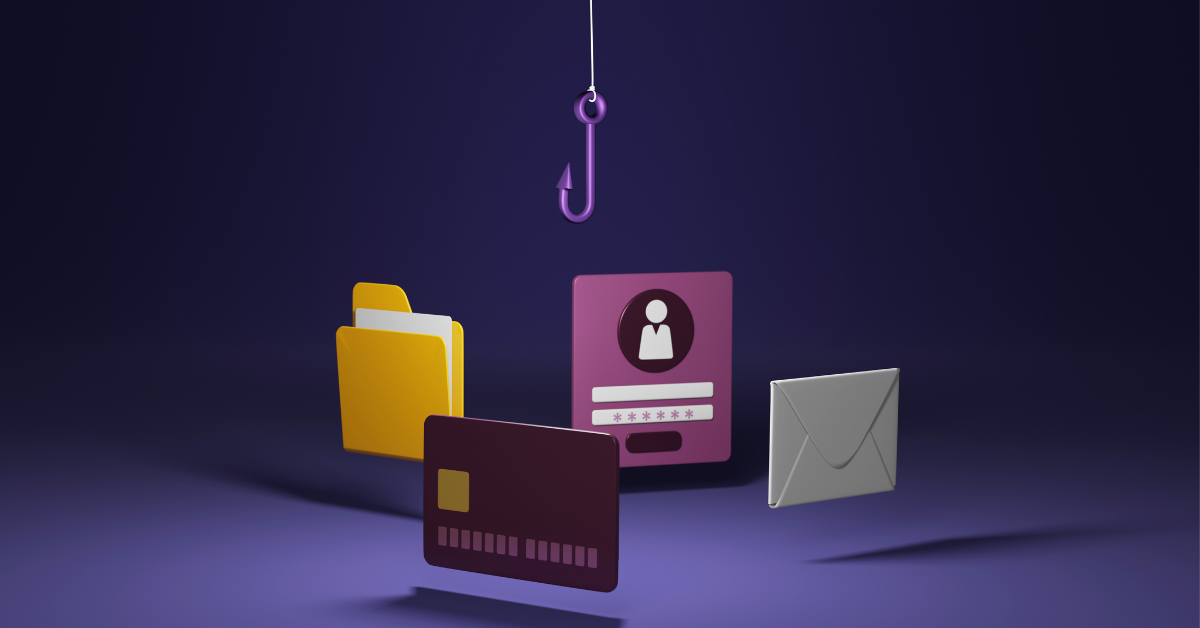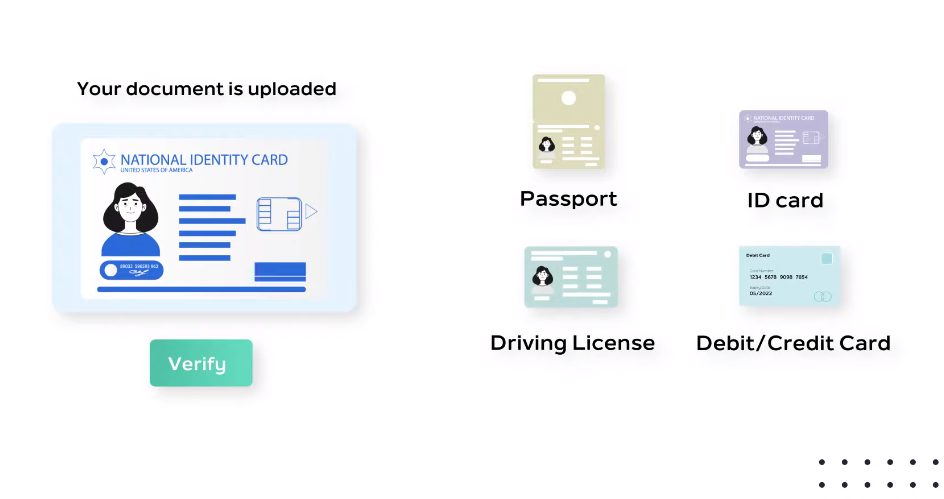Understanding Data Security
Data security is the practice of protecting digital information from unauthorized access, use, disclosure, disruption, modification, or destruction. It encompasses various measures and strategies implemented to safeguard sensitive data and ensure its confidentiality, integrity, and availability.
Types of Data At Risk

1. Personal Identifiable Information (PII): This includes data such as names, addresses, social security numbers, and financial information. It is often targeted by identity thieves and cybercriminals.
2. Intellectual Property: This refers to proprietary information, trade secrets, patents, copyrights, and trademarks. Companies need to protect this data from unauthorized access or theft to maintain a competitive advantage.
3. Financial Data: This includes banking information, credit card details, and financial transactions.
Common Threats to Data Security
Common threats to data security include:
1. Malware: Malicious software, such as viruses, worms, trojans, and ransomware, can infect systems and compromise data security.
2. Phishing: This is a technique used by cybercriminals to trick individuals into revealing sensitive information, such as usernames, passwords, or credit card details, by posing as a trustworthy entity.
3. Social Engineering: This involves manipulating individuals into divulging confidential information or performing actions that compromise data security.
Preparing Your Computer

Backup Your Data
To prepare your computer and protect your data, it is important to follow these steps:
1. Backup Your Data: Regularly back up your important files and data to an external storage device or cloud storage. This ensures that even if your computer gets infected or compromised, you can still retrieve your important information.
2. Install Antivirus Software: Install reputable antivirus software on your computer and keep it updated.
Encrypt Sensitive Files
To encrypt sensitive files on your computer, follow these steps:
1. Identify the sensitive files: Determine which files contain sensitive information that you want to protect.
2. Choose an encryption method: Research and select a reliable encryption method that suits your needs. There are various encryption software available that can help you encrypt your files.
Remove Personal Information
To remove personal information from your computer, follow these steps:1. Clear browsing data: Clear your browsing history, cookies, and cache in your web browser to remove any stored personal information.
2. Delete temporary files: Use the disk cleanup tool or manually delete temporary files from your computer to remove any personal information stored in these files.
3. Uninstall unnecessary programs: Remove any programs or applications that may contain personal information or have access to your data.
Selecting a Trusted Service Provider
To select a trusted service provider, consider the following steps:
1. Research and compare: Look for multiple service providers in your desired field and compare their offerings, reputation, and customer reviews. Consider factors such as experience, expertise, and customer satisfaction.
2. Check credentials and certifications: Ensure that the service provider has the necessary credentials, certifications, and licenses to perform the required services. This will help verify their expertise and adherence to industry standards.
Research and Recommendations
Based on your request, here are some research and recommendation steps for finding a service provider:
1. Research and compare: Look for multiple service providers in your desired field and compare their offerings, reputation, and customer reviews. Consider factors such as experience, expertise, and customer satisfaction.
2. Check credentials and certifications: Ensure that the service provider has the necessary credentials, certifications, and licenses to perform the required services. This will help verify their expertise and adherence to industry standards.
Non-Disclosure Agreements
Non-Disclosure Agreements (NDAs) are legal contracts that protect confidential information shared between parties. They outline the terms and conditions under which the information will be shared and the consequences of any breach of confidentiality. NDAs are commonly used in business transactions, partnerships, and collaborations to safeguard sensitive information. It is important to carefully review and understand the terms of an NDA before signing it to ensure that your rights and interests are protected.
Transporting Your Computer
Transporting your computer requires careful handling to ensure its safety and prevent any damage. Here are some tips to follow:
1. Backup your data: Before transporting your computer, make sure to back up all your important files and data. This will ensure that even if something happens to your computer during transit, you won’t lose any important information.
2. Use appropriate packaging: Use a sturdy and protective case or box to pack your computer.
Secure Packaging
When packaging your computer for transportation, it is important to use appropriate packaging materials to ensure its safety. Here are some tips for secure packaging:
1. Use a sturdy box: Choose a box that is strong enough to support the weight of your computer and provides enough space for padding materials.
2. Wrap your computer: Wrap your computer in anti-static bubble wrap or foam to protect it from any potential impact or scratches.
Tracking and Insurance
When shipping your computer, it is important to consider tracking and insurance options to protect your package. Here are some tips for tracking and insuring your shipment:
1. Choose a reputable shipping service: Select a shipping service that provides tracking capabilities. This will allow you to monitor the progress of your package and ensure its safe arrival.
2. Purchase insurance: Consider purchasing shipping insurance to provide coverage in case of damage or loss during transit. Many shipping services offer insurance options that can be added to your shipment.
Monitoring the Repair Process
Thank you for your request. Here are some tips for tracking and insuring your shipment:
1. Choose a reputable shipping service: Select a shipping service that provides tracking capabilities. This will allow you to monitor the progress of your package and ensure its safe arrival.
2. Purchase insurance: Consider purchasing shipping insurance to provide coverage in case of damage or loss during transit. Many shipping services offer insurance options that can be added to your shipment.
Communication Channels
Here are some communication channels you can use to track and insure your shipment:
1. Online tracking: Most shipping services provide online tracking tools that allow you to enter your tracking number and see the status of your shipment in real time. This is usually available on the shipping service’s website or through their mobile app.
2. Email notifications: Many shipping services offer email notifications that provide updates on the progress of your shipment.
Timeframe and Deadlines
Here are some communication channels you can use to track and ensure your shipment:
1. Online tracking: Most shipping services provide online tracking tools that allow you to enter your tracking number and see the status of your shipment in real time. This is usually available on the shipping service’s website or through their mobile app.
2. Email notifications: Many shipping services offer email notifications that provide updates on the progress of your shipment. You can opt-in to receive these notifications and stay informed about any changes or delays.
3. SMS alerts: Some shipping services also offer SMS alerts, where you can receive text messages with updates on your shipment. This can be especially convenient if you’re on the go and don’t have access to email or the internet.
4. Customer service support: If you have any questions or concerns about your shipment, most shipping services have customer service support available.
Receiving Your Computer Back
To receive your computer back, you can follow these steps:
1. Contact the shipping service: Reach out to the shipping service you used to send your computer and inquire about the return process. They will provide you with instructions on how to proceed.
2. Provide necessary information: You may be asked to provide details such as the tracking number, your contact information, and the address where you want your computer to be returned.
Verification Process

To initiate the verification process, please follow these steps:
1. Contact the relevant department or organization: Reach out to the department or organization that is responsible for the verification process. This could be a bank, government agency, or any other entity that requires verification.
2. Provide the necessary information: Be prepared to provide the required information for verification purposes. This may include personal identification details, account numbers, or any other relevant information.
Secure Data Transfer
To ensure the secure transfer of data, follow these steps:
1. Use encrypted communication: When contacting the relevant department or organization, make sure to use secure communication methods such as encrypted email or secure messaging platforms.
2. Verify the recipient’s identity: Before sharing any sensitive information, verify the identity of the person or organization you are communicating with. Look for official contact information and confirm it through trusted sources.
Frequently Asked Questions (FAQs)
How long should I keep my computer backed up after service?
It is recommended to keep your computer backed up regularly, ideally on a daily or weekly basis, depending on your usage and the importance of the data. Keeping regular backups ensures that you have the most recent version of your files in case of any unexpected incidents or system failures.
Can I trust remote repair services with my data?
Remote repair services can be trusted with your data, but it is important to choose a reputable and trustworthy service provider. Before using a remote repair service, do your research and read reviews to ensure they have a good track record of protecting customer data. Additionally, you can take steps to further protect your data by encrypting sensitive files or using a virtual private network (VPN) during the remote repair session.
What should I do if my computer gets lost during transportation?
If your computer gets lost during transportation, there are several steps you can take:1. Contact the transportation company: Immediately notify the transportation company about the lost item. Provide them with all the necessary details, such as the tracking number, description of the package, and any other relevant information.
2. File a police report: If your computer was lost or stolen, it’s important to file a police report.
Can I encrypt my entire hard drive?
Yes, you can encrypt your entire hard drive. Encrypting your hard drive adds an extra layer of security by scrambling the data on your drive and making it unreadable without the encryption key. This helps protect your sensitive information in case your computer gets lost or stolen. There are various encryption software tools available that allow you to encrypt your entire hard drives, such as BitLocker for Windows and FileVault for macOS.
How often should I update my computer’s antivirus software?
It is recommended to update your computer’s antivirus software regularly. This ensures that you have the latest virus definitions and security patches to protect your system from new threats. It is generally advisable to set your antivirus software to update automatically, so you don’t have to remember to do it manually.
